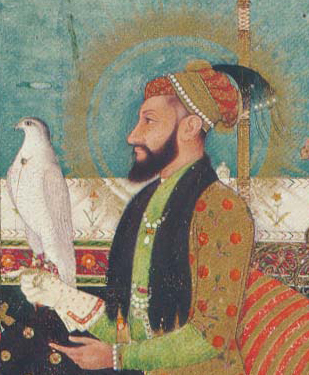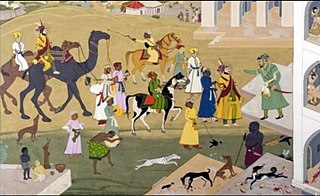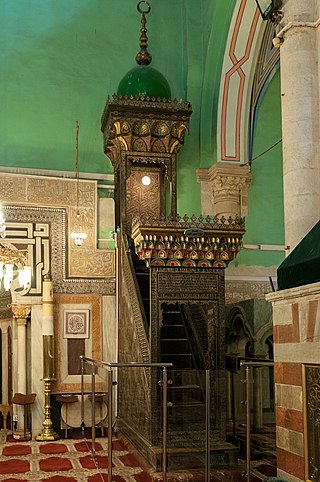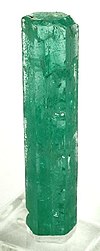
Muhi al-Din Muhammad, commonly known as Aurangzeb and by his regnal name Alamgir I, was the sixth Mughal emperor, reigning from 1658 until his death in 1707. Under his emperorship, the Mughal Empire reached its greatest extent with territory spanning nearly the entirety of the Indian subcontinent.

Imam is an Islamic leadership position. For Sunni Muslims, Imam is most commonly used as the title of a prayer leader of a mosque. In this context, imams may lead Islamic prayers, serve as community leaders, and provide religious guidance. Thus for Sunnis, anyone can study the basic Islamic sciences and become an Imam.
Shīʿa Islam, otherwise known as Shīʿism or as Shīʿite or Shīʿī Islam, is the second-largest branch of Islam. It holds that the Islamic prophet Muhammad designated ʿAlī ibn Abī Ṭālib as his successor (khalīfa) and the Imam after him, most notably at the event of Ghadir Khumm, but was prevented from succeeding Muhammad as the leader of the Muslims as a result of the choice made by some of Muhammad's other companions (ṣaḥāba) at Saqifah. This view primarily contrasts with that of Sunnī Islam, whose adherents believe that Muhammad did not appoint a successor before his death and consider Abū Bakr, who was appointed caliph by a group of senior Muslims at Saqifah, to be the first rightful (rāshidūn) caliph after Muhammad. Adherents of Shīʿa Islam are called Shīʿa Muslims, Shīʿites, or simply Shīʿa, Shia, or Shīʿīs.
The Hanafi school is the oldest of the four major Sunni Islamic schools of jurisprudence (fiqh). It was established by the 8th century Kufan scholar Abu Hanifa, a Tabi‘i whose legal views were preserved primarily by two of his disciples, Abu Yusuf and Muhammad al-Shaybani. It is considered one of the most widely accepted legal school of thought (maddhab) amongst Sunni Muslim community and is called the Madhhab of Jurists. Many Hanafi Muslims follow the Maturidi school of theology.

The Peacock Throne was a famous jewelled throne that was the seat of the emperors of the Mughal Empire in India. It was commissioned in the early 17th century by Emperor Shah Jahan and was located in the Diwan-i-Khas in the Red Fort of Delhi. It was named after a peacock as two peacocks are shown dancing at its rear.

Mughal architecture is the type of Indo-Islamic architecture developed by the Mughals in the 16th, 17th and 18th centuries throughout the ever-changing extent of their empire in the Indian subcontinent. It developed from the architectural styles of earlier Muslim dynasties in India and from Iranian and Central Asian architectural traditions, particularly Timurid architecture. It also further incorporated and syncretized influences from wider Indian architecture, especially during the reign of Akbar. Mughal buildings have a uniform pattern of structure and character, including large bulbous domes, slender minarets at the corners, massive halls, large vaulted gateways, and delicate ornamentation; examples of the style can be found in modern-day Afghanistan, Bangladesh, India and Pakistan.

The Mosque of Ibn Tulun is located in Cairo, Egypt. It is one of the oldest mosques in Egypt as well as the whole of Africa surviving in its full original form, and is the largest mosque in Cairo in terms of land area. It is built around an open square courtyard which allows natural light to travel through. Ibn Tulun Mosque features ancient architecture styles of Egypt, its decorations being created from carved stucco and wood. This mosque is a popular tourist attraction.
Tayyibi Isma'ilism is the only surviving sect of the Musta'li branch of Isma'ilism, the other being the extinct Hafizi branch. Followers of Tayyibi Isma'ilism are found in various Bohra communities: Dawoodi, Sulaymani, and Alavi.

The Imam Husayn Shrine is the mosque and burial site of Husayn ibn Ali, the third Imam of Shia Islam, in the city of Karbala, Iraq. It stands on the site of the Mausoleum of Husayn, who was a grandson of Muhammad, near the place where he embraced martyrdom during the Battle of Karbala in 680 CE The tomb of Husayn is one of the holiest sites in Shia Islam, outside of Mecca and Medina, and many make pilgrimages to the site. Every year, millions of pilgrims visit the city to observe Ashura, which marks the commemoration of Husayn's death for all Muslims.

The Bibi Ka Maqbara is a tomb located in Aurangabad, Maharashtra, India. It was commissioned in 1660 by the Mughal emperor Aurangzeb's son prince Azam Shah in the memory of his loving mother Dilras Banu Begum. It bears a striking resemblance to the Taj Mahal, the mausoleum of Aurangzeb's mother, Mumtaz Mahal. Aurangzeb was not much interested in architecture though he had commissioned the small, but elegant, Moti Masjid at Delhi. Bibi Ka Maqbara is the second largest structure that Aurangzeb has built, the largest being the Badshahi Mosque.

Khuldabad is a city and a Taluka of Aurangabad district in the Indian state of Maharashtra. It is known as the Valley of Saints, or the Abode of Eternity, because in the 14th century, several Sufi saints chose to reside here. The Bhadra Maruti Temple and Dargah of Zar Zari Zar Baksh, Shaikh Burhan ud-din Gharib Chisti and Shaikh Zain-ud-din Shirazi, along with the tomb of the Mughal emperor Aurangzeb and his trusted General Asif Jah I, the first Nizam of Hyderabad, are located in this town. It is a holy and spiritual city of Islamic saints.

Niccolao Manucci was a Venetian writer, a self-taught physician, and traveller, who wrote accounts of the Mughal Empire as a first-hand witness. His work is considered to be one of the most useful foreign sources for the events that took place in India under Mughal rule. He also documented folk beliefs and customs of the period.

Mirzā Mazhar Jān-i Jānān, also known by his laqab Shamsuddīn Habībullāh (1699–1781), was a renowned Hanafi Maturidi Naqshbandī Sufi poet of Delhi, distinguished as one of the "four pillars of Urdu poetry." He was also known to his contemporaries as the sunnītarāsh, "Sunnicizer", for his absolute, unflinching commitment to and imitation of the Sunnah.

The Shah Diamond was found at the Golconda mines in what is now Telangana, South India, probably in 1450, and it is currently held in the Diamond Fund collection of Moscow's Kremlin Armoury.

The Mughal Empire was an early modern empire in South Asia. At its peak, the empire stretched from the outer fringes of the Indus River Basin in the west, northern Afghanistan in the northwest, and Kashmir in the north, to the highlands of present-day Assam and Bangladesh in the east, and the uplands of the Deccan Plateau in South India.

Muqarrab Khan of Golconda, also known as Khan Zaman Fath Jang Dakhini, was an Indian Deccani Muslim, who was the most experienced commander of Qutb Shahi Dynasty, during the reign of Abul Hasan Qutb Shah. He is known for betraying Abul Hasan Qutb Shah during Siege of Golconda. He arrested Maratha Emperor Sambhaji at Sangameshwar.

The Badshahi Mosque is an iconic Mughal-era congregational mosque in Lahore, Punjab, Pakistan. The mosque is located opposite of Lahore Fort in the outskirts of the Walled City and is widely considered to be one of Lahore's most iconic landmarks.

The minbar of the Ibrahimi Mosque is an 11th-century minbar in the Ibrahimi Mosque in Hebron, West Bank. The minbar was commissioned by the Fatimid vizier Badr al-Jamali in 1091 for the Shrine of Husayn's Head in Ascalon but was moved to its current location by Salah ad-Din (Saladin) in 1191.















